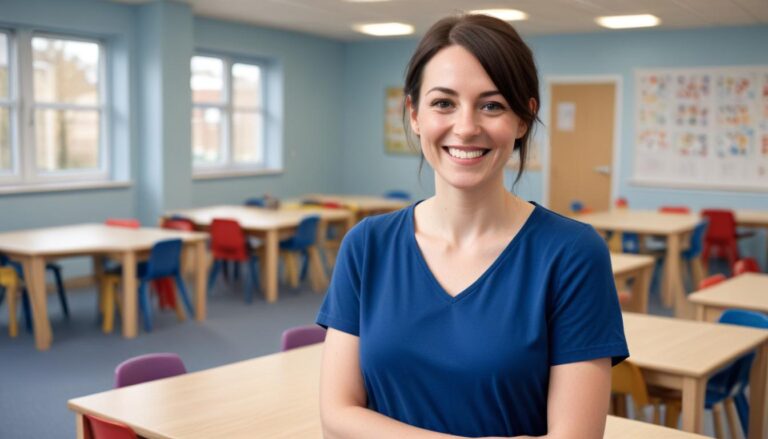Summary
- Definition: Learned behaviour is the way individuals develop responses and actions through experiences, differing from innate behaviours that are instinctual from birth.
- Theories: Key theories include classical conditioning (learning through association), operant conditioning (learning through consequences), and observational learning (learning by mimicking others).
- Acquisition Methods: Children acquire learned behaviour through direct instruction, social interactions, play, and media exposure, all of which shape their understanding and actions in various contexts.
- Role of Practitioners: Health and social care professionals can enhance positive behaviour by creating supportive environments, modelling desirable behaviours, encouraging social interactions, and providing ongoing assessment and feedback to guide children’s development effectively.
Learned behaviour is a fundamental concept in understanding how individuals, especially young children, develop and interact with their environment. This aspect of behaviour is essential in early years education, often shaping the way children perceive and respond to the world around them. Understanding learned behaviour equips early years practitioners with the knowledge needed to foster positive development in children.
What is Learned Behaviour?
Learned behaviour refers to responses and actions that individuals acquire through experience. Unlike innate behaviours, which are instinctual and present at birth, learned behaviour arises from interaction with one’s environment. Experiences shape these behaviours over time.
Distinction from Innate Behaviour
- Innate Behaviour: These are automatic. They require no prior experience or learning. Examples include reflex actions like sucking or grasping in infants.
- Learned Behaviour: These develop through interaction. This can involve trial and error, observation, or direct teaching.
Theories of Learned Behaviour
Several theories explain how learned behaviours develop. Understanding these theories aids in comprehending the mechanisms behind behaviour acquisition.
Classical Conditioning
This theory was proposed by Ivan Pavlov. It involves learning through association. An initially neutral stimulus becomes associated with a significant one, eliciting a similar response. For example, a child might associate the sound of a bell with lunchtime if the sound consistently precedes meals.
Operant Conditioning
B.F. Skinner introduced operant conditioning. It involves learning through consequences. Behaviours are reinforced with rewards or discouraged with punishments. If a child receives praise for tidying up toys, they are more likely to repeat the behaviour.
Observational Learning
Albert Bandura’s theory centres on learning through observation. Children observe the actions of others and mimic them. Role models are essential here. For instance, a child may imitate a parent’s way of speaking.
How Children Acquire Learned Behaviour
Children acquire learned behaviour through various channels. Each method involves different aspects of interaction.
Direct Instruction
Direct instruction involves intentional teaching. Adults explicitly instruct children on desirable behaviours, like saying “please” and “thank you.” This method is essential in guiding behaviour.
Social Interaction
Through social interaction, children learn how to behave in society. They pick up social norms, languages, and manners. Peers, family, and teachers play significant roles here.
Play and Exploration
Play is a natural way for children to learn behaviour. Through play, they experiment with social roles and rules. It provides a safe space for practising behaviours without real-world consequences.
Media and Technology
Today, media and technology significantly influence learned behaviour. Television, games, and the internet expose children to numerous behaviours. Practitioners should guide children’s media consumption carefully.
The Need for Understanding Learned Behaviour
For early years practitioners, understanding learned behaviour is essential. Here are several reasons why it’s important:
Fostering Positive Behaviour
Understanding conditions that encourage positive behaviour helps practitioners create supportive environments. Positive reinforcement can encourage desirable habits in children.
Addressing Behavioural Issues
By understanding learned behaviour, practitioners can identify potential problems early. They can then address these issues through tailored interventions, such as behavioural therapy or parental involvement.
Personalising Learning
Children have different learning styles. Practitioners who understand this can personalise learning experiences to suit each child’s needs. This ensures children are engaged and learn more effectively.
Factors Influencing Learned Behaviour
Several external and internal factors influence learned behaviour in children. Recognising these factors can help practitioners guide and mould these behaviours appropriately.
Environmental Factors
- Family Dynamics: The family environment heavily influences behaviour. Positive family interactions foster healthy behaviours.
- Cultural Norms: These define acceptable behaviours. Practitioners need to be culturally aware to support diverse learners.
Biological Factors
- Genetics: While behaviours are learned, genetic predispositions can play a role. For example, a child may be naturally more empathetic.
- Brain Development: A child’s brain continues to develop rapidly in early years. This biological aspect can affect learning capacity and behaviour acquisition.
Emotional Factors
- Attachment: A secure attachment with caregivers promotes positive behaviour. Insecure attachment can lead to behavioural issues.
- Emotional Regulation: Children learning to manage emotions can acquire behaviours that reflect their ability to cope with stress.
Role of Practitioners in Shaping Learned Behaviour
Early years practitioners play a pivotal role in shaping learned behaviour. They can foster environments that promote growth and positive learning experiences.
Creating Supportive Environments
Practitioners should create environments conducive to learning positive behaviours. This includes:
- Ensuring safety and security in learning spaces
- Providing resources that encourage exploration and learning
- Establishing routines that foster stability
Modelling Behaviour
Children often imitate adults. Practitioners can model behaviours they wish to instil, such as kindness, patience, and respect. Consistent modelling helps reinforce these behaviours.
Encouraging Positive Interactions
Facilitating positive peer interactions encourages social learning. Collaborative play and group activities help children practise social skills and learn from each other.
Ongoing Assessment and Feedback
Regular assessment helps track behavioural development. Feedback should be constructive, focusing on improvement rather than punishment. Highlight efforts and progress to reinforce positive actions.
Issues in Managing Learned Behaviour
Managing learned behaviour isn’t without challenges. Practitioners may face various obstacles in the developmental journey of each child.
Diverse Backgrounds
Children come from varied cultural and familial backgrounds. This diversity means there is no one-size-fits-all approach. Practitioners must be adaptable and culturally sensitive.
External Influences
Influences outside the practitioner’s control can impact behaviour. These can range from media exposure to societal changes. Maintaining open communication with parents is essential to align home and school environments.
Behavioural Disorders
Some children may exhibit behavioural disorders like ADHD or autism spectrum disorder. These conditions require specialised strategies for managing learned behaviour. Collaboration with specialists could be necessary.
Final Thoughts
Learned behaviour is an essential aspect of child development. As early years practitioners, understanding how children acquire and demonstrate learned behaviours is key to supporting their growth. Through various learning theories, methods of acquisition, and understanding influencing factors, practitioners can foster positive behavioural development. Also, by creating supportive environments and modelling desired behaviours, practitioners enable children to thrive.
In summary, learned behaviour is complex but immensely important. It influences not only how children behave but how they learn and develop life skills. By investing time in understanding and guiding learned behaviours, practitioners play an essential role in shaping future generations.
Subscribe to Newsletter
Get the latest news and updates from Care Learning and be first to know about our free courses when they launch.







